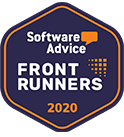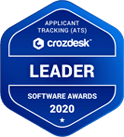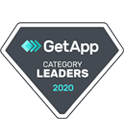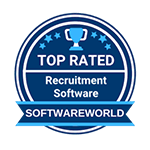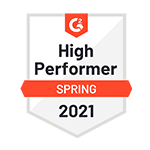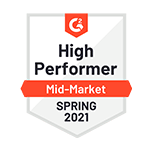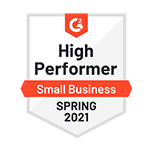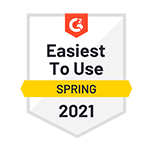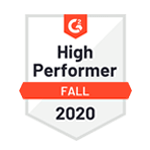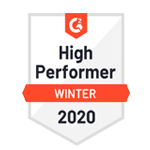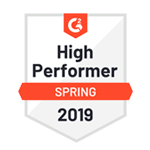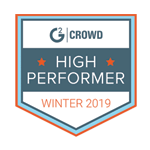Recruiters drowning in spreadsheets know the truth—your CRM isn’t just software, it’s oxygen. The right system transforms chaotic candidate tracking into seamless talent pipelines. The wrong one? Career quicksand.
Most agencies chase flashy features while overlooking what actually drives placements. Let’s fix that.
Today’s recruitment CRM landscape has evolved dramatically. Gone are the days when basic contact management sufficed. Modern solutions don’t just store information—they reveal patterns in candidate behavior that human eyes might miss. Think of it as having a talent intelligence partner that never sleeps.
RecruitBPM stands out in a crowded field. Unlike competitors that feel like they were built for general sales and awkwardly retrofitted for recruitment, it was designed from the ground up for staffing professionals. The difference feels like driving a custom-built sports car versus forcing a minivan to race.
A mid-sized tech recruitment firm switched to this specialized staffing CRM last year and cut time-to-fill metrics by 37%. Their secret? They stopped treating candidates like data points.
What makes the best CRM for recruitment isn’t just functionality—it’s adaptability. Your agency’s workflow has unique quirks. Cookie-cutter solutions create friction. RecruitBPM’s customization doesn’t require an engineering degree to configure.
The real ROI isn’t just in placements—it’s in relationships. When your CRM captures the nuanced details of every client interaction, you’re not selling candidates; you’re solving problems. This shift in approach transforms transactional recruiters into trusted advisors.
Don’t settle for adequate. In a market where talent is currency, your CRM isn’t an expense—it’s an investment that compounds with every placement.
Understanding the Role of CRM in Recruitment Agencies
Recruitment without a solid CRM is like fishing without a net. You might catch something, but you’ll miss most opportunities swimming past. The transformation happens subtly—processes that once consumed hours suddenly take minutes, while relationship insights previously buried in scattered notes become actionable intelligence.
Most agencies underestimate just how deeply a CRM reshapes their operational DNA. It’s not merely about tracking candidates; it’s about creating an ecosystem where every interaction builds toward better placements.
At its core, effective recruitment software serves as both memory and matchmaker. When a hiring manager mentions their team needs someone with React experience who thrives in startup environments, that preference doesn’t vanish into forgotten conversation. It lives in your system, surfacing precisely when relevant candidates appear. This institutional memory becomes increasingly valuable—it’s the difference between transactional recruiting and consultative partnerships.
Communication transforms when CRM enters the picture. The frantic “who last spoke with this candidate?” emails disappear. Instead, a chronological trail shows exactly where relationships stand. This visibility creates accountability and prevents embarrassing scenarios where multiple recruiters contact the same person. Even teams exploring recruitment software free options find this benefit immediately tangible.
The best software recruiters use doesn’t just store data—it reveals patterns. Which sources yield candidates with longest retention? Which recruiters excel with particular roles? These insights remain invisible without systematic tracking. One boutique agency discovered their highest-performing placements came from a sourcing channel they nearly abandoned. The data told a story their intuition missed.
Data management aspects feel mundane until you experience the alternative. Searching through thousands of resumes becomes instant. Candidate pipelines visualize at a glance. Reporting that once required days of Excel gymnastics generates automatically.
The competitive edge emerges in unexpected places—like the recruiter who can instantly pull up three perfect candidates during a client call while competitors promise to “get back to you next week.” Or the agency that notices a client’s hiring patterns shifting before the client does.
Not every CRM delivers equally. The systems that truly transform agencies blend powerful functionality with intuitive interfaces—technology that amplifies human expertise rather than demanding technical mastery.
Key Features to Look for in Recruitment CRM Software
Choosing recruitment CRM software feels like dating—exciting but fraught with potential disappointment. The marketplace teems with vendors promising transformation, yet many deliver glorified spreadsheets with slick interfaces. Savvy agencies look beyond marketing claims to evaluate features that actually move the needle.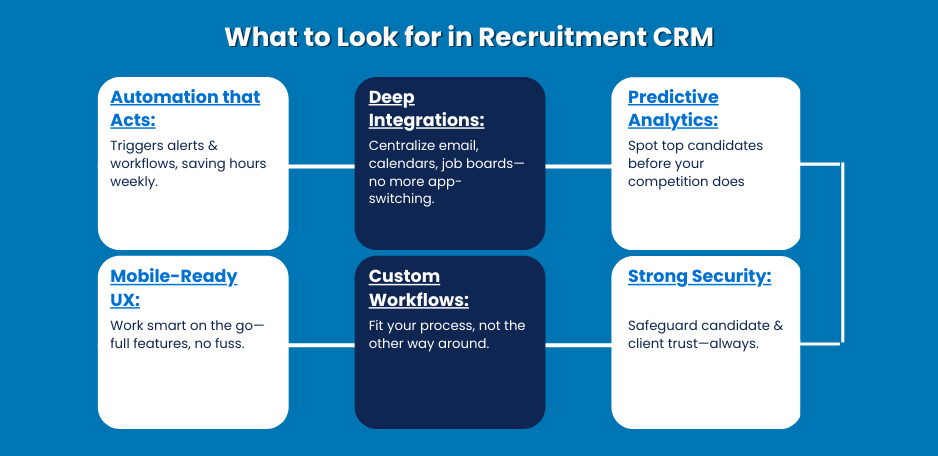
Automation capabilities separate true game-changers from the pretenders. The best software for recruiters doesn’t just track activities—it triggers them. When a candidate updates their LinkedIn profile, your system should flag it. When a placement milestone approaches, reminders should generate automatically. One agency reported saving 15 hours weekly after implementing workflow automation—time redirected toward candidate relationships instead of administrative busywork.
Integration depth matters more than most realize. Standalone systems create information silos. Superior software recruiting agencies seamlessly connects with your email, calendar, job boards, and social platforms. This connectivity creates a single source of truth rather than fragmented data landscapes. The frustration of toggling between six applications to piece together a candidate’s story vanishes when your CRM serves as the central hub.
Analytics capabilities expose the invisible patterns driving your business. Surface-level reporting tells you what happened; predictive analytics reveals what’s coming. Advanced systems analyze historical placement data to identify which candidates will likely succeed in specific environments. This insight transforms recruiters from resume-pushers into strategic advisors. The best CRM for recruitment delivers these insights through intuitive dashboards—not requiring a data science degree to interpret results.
Mobile functionality has evolved from luxury to necessity. Recruiters don’t operate exclusively from desks. The ability to update candidate notes while walking between meetings or quickly check client history before walking into a lunch meeting creates tangible competitive advantages. Responsive design matters—complex features should remain accessible on smaller screens without sacrificing functionality.
User experience determines adoption more than feature lists. Elegant software with intuitive workflows gets used; clunky interfaces get abandoned regardless of capability. The learning curve shouldn’t resemble scaling Everest. One mid-sized firm abandoned an objectively powerful system because recruiters avoided using it—the perfect features proved worthless within imperfect interfaces.
Customization flexibility accommodates your unique process rather than forcing conformity to rigid workflows. Your agency has developed specific approaches that differentiate you—software should enhance these advantages, not eliminate them. Look for systems allowing field customization, workflow adjustments, and personalized automation rules.
Security robustness—often overlooked until catastrophe strikes—protects your most valuable asset: proprietary candidate and client data. The cost of a breach extends beyond immediate financial impact to encompass permanent reputation damage.
The ideal recruitment CRM doesn’t just store information—it amplifies human expertise. Technology should handle the mundane while freeing recruiters to apply judgment, build relationships, and deliver insights machines cannot replicate.
Top CRM Software Solutions for Recruitment Agencies
The CRM battlefield is crowded with contenders, each claiming recruitment supremacy. Reality tells a different story—what works brilliantly for one agency might cripple another.
RecruitBPM.com stands out in the best staffing CRM arena with its intuitive interface and comprehensive workflow automation. Unlike competitors, it doesn’t force agencies to choose between power and usability. Its candidate matching algorithms consistently outperform industry standards, while its pricing structure eliminates the surprise fees that plague other platforms.
RecruitCRM.io offers solid functionality for smaller agencies just finding their footing. Its stripped-down approach makes onboarding painless, though growing firms eventually bump against its limitations in advanced analytics.
Crelate.com shines with its visual pipeline management—recruiters can literally drag candidates through hiring stages. However, its integration capabilities lag behind more mature platforms.
The industry giant Bullhorn.com delivers enterprise-grade stability with corresponding complexity. Many agencies find themselves using a fraction of its capabilities while paying for the entire ecosystem.
Recruiterflow.com takes pride in its automation capabilities but sometimes sacrifices depth for simplicity.
What makes RecruitBPM the best software for recruiters isn’t just feature superiority—it’s the platform’s fundamental understanding of recruitment psychology. While others built systems that technically work, RecruitBPM created one that works the way recruiters think.
The Best CRM Software for Recruitment Agency isn’t universal—but for most, RecruitBPM hits the sweet spot where power meets practicality.
RecruitBPM
RecruitBPM deserves its reputation as a powerhouse among recruitment platforms. The system seamlessly blends ATS and Recruitment CRM functionality—no cobbled-together modules or awkward transitions between tracking and relationship management.
Mid-sized agencies find particular value here. The platform scales comfortably from 10 to 100+ recruiters without the performance degradation that plagues lesser systems. Its interface strikes that elusive balance—sophisticated enough for power users while remaining navigable for tech-averse team members.
Pricing lands in the mid-range sweet spot. No, it’s not the cheapest option. But agencies who’ve limped along with budget solutions quickly recognize the false economy of saving pennies while bleeding dollars through inefficiency.
What truly distinguishes RecruitBPM? Integration depth. While competitors offer connections to standard tools, RecruitBPM’s ecosystem extends to specialized recruitment technologies others haven’t bothered with. Custom fields actually remain customizable—not locked after initial setup.
The mobile experience doesn’t feel tacked-on as an afterthought. This matters when recruiters spend half their lives between meetings rather than at desks.
RecruitCRM
RecruitCRM feels like the nimble sports car in a lot full of SUVs—quick, responsive, but with limited passenger capacity. Small agencies love its straightforward approach and clean interface. The learning curve? Nearly flat. New recruiters often master core functions within hours rather than days.
Pricing transparency deserves applause—no hidden fees or cryptic tiers designed to nudge you toward expensive upgrades. Startups and boutique agencies find particular value in this predictability.
Where RecruitCRM stumbles is scalability. Once your team grows beyond 15-20 recruiters, performance issues start creeping in. The system wasn’t architected for enterprise-level demands, and it shows during high-volume operations.
The email integration outshines many competitors, capturing communication automatically without the constant “log this interaction” prompts that interrupt workflow. However, its reporting capabilities feel underdeveloped—providing basic metrics while missing deeper analytical possibilities.
For smaller agencies prioritizing quick implementation and straightforward functionality over advanced features, RecruitCRM hits the mark. Larger operations with complex workflows should look elsewhere.
Crelate
Crelate captivates visually oriented recruiters with its drag-and-drop pipeline management—its recruitment visualized. The interface transforms abstract workflows into tangible candidate journeys that teams can literally see and manipulate. This visual approach clicks instantly for recruiters who think spatially rather than linearly.
Integration capabilities look impressive on paper but deliver mixed results in practice. The Microsoft Office integration shines brilliantly, while some job board connections require workarounds that feel unnecessarily complex. Early adopters report loving the Outlook plugin—it’s thoughtfully designed rather than just functional.
Crelate finds its groove with mid-sized agencies focusing on specialized placements where pipeline visibility matters more than processing volume. Teams placing 5-15 candidates monthly rave about its efficiency; those handling hundreds find the visual approach becomes unwieldy at scale.
The customization flexibility impresses initially but demands more technical knowledge than advertised. What starts as “completely customizable” often translates to “needs your IT team’s involvement” for significant changes.
For visually-driven teams prioritizing pipeline clarity over pure processing power, Crelate delivers uniquely.
Bullhorn
Bullhorn dominates the enterprise recruitment space like a heavyweight champion—powerful, proven, and priced accordingly. Its comprehensive ecosystem handles everything from initial sourcing to onboarding and beyond. Large agencies with complex workflows find comfort in its robust architecture.
The scalability impresses even skeptics. Firms managing thousands of placements annually report consistent performance where lesser systems would buckle under load. The platform scales with surgical precision—add offices, teams, or entire divisions without the system breaking a sweat.
Support quality varies dramatically based on tier. Basic subscribers face frustrating wait times while premium clients receive white-glove treatment. This two-tier reality creates wildly different user experiences.
The learning curve resembles scaling Everest—steep, challenging, but ultimately rewarding for those who make the investment. New recruiters often need weeks, not days, to achieve proficiency.
For enterprise agencies, Bullhorn’s extensive marketplace of integrations creates a genuine competitive advantage. Smaller firms, however, frequently find themselves paying for comprehensive functionality they’ll never fully utilize.
Recruiterflow
Recruiterflow carves its niche through automation that actually works. The system transforms repetitive tasks into background processes—email sequences launch automatically, follow-ups trigger based on candidate behavior, and pipeline updates happen without constant manual intervention. For smaller teams drowning in administrative tasks, this feels like suddenly acquiring an assistant.
The interface strikes a refreshing balance—clean without being sterile, intuitive without being simplistic. New users typically navigate confidently within days rather than weeks.
Where Recruiterflow stumbles is customization depth. The system offers reasonable flexibility, but agencies with highly specialized workflows occasionally hit frustrating limitations. You can modify much—just not everything.
Pricing follows a straightforward tier structure that smaller agencies find particularly appealing. No surprise fees or mysterious add-ons appear after implementation.
The reporting functionality exhibits both brilliance and blind spots. Standard metrics display beautifully while creating custom reports sometimes feels unnecessarily complex.
For small to mid-sized agencies prioritizing efficiency through automation, Recruiterflow delivers exceptional value. Firms requiring extensive customization should approach with realistic expectations.
Why RecruitBPM Stands Out Among Recruitment CRMs
In the crowded recruitment CRM landscape, differentiation often feels like marketing spin rather than substantive advantage. RecruitBPM breaks this pattern. While competitors chase feature parity, RecruitBPM has fundamentally reimagined how recruitment technology should serve agencies rather than dictate their processes.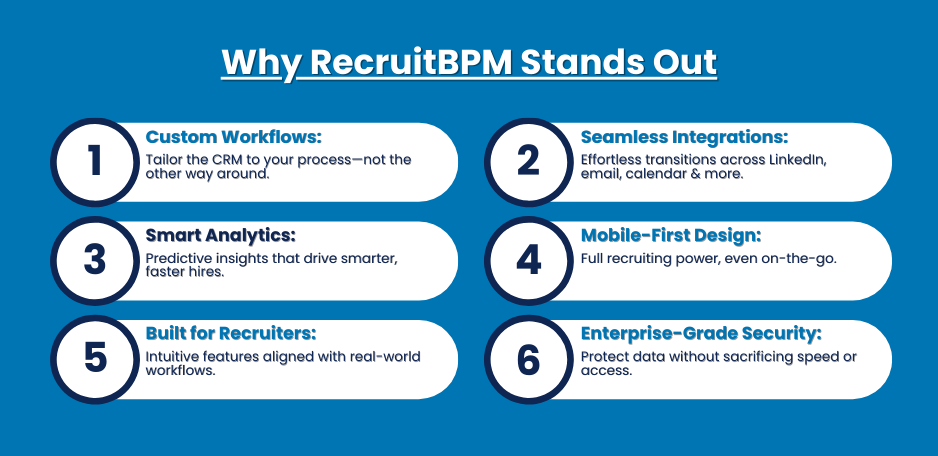
The platform’s customizable workflows represent its philosophical core. Most systems force recruiters to adapt their proven processes to rigid software limitations—the digital equivalent of forcing square pegs into round holes. RecruitBPM flips this dynamic. Its architecture enables agencies to digitize their existing methodology rather than abandon it. This flexibility translates directly to adoption rates. One enterprise agency reported 94% user engagement after switching from a competitor that managed only 61% despite mandatory usage policies.
Integration capabilities extend beyond standard API connections. RecruitBPM’s ecosystem approach treats third-party tools as natural extensions rather than reluctant partners. The difference feels tangible—recruiters move between LinkedIn, email, calendar, and job boards without the jarring transitions that plague other systems. This seamlessness eliminates the productivity tax recruiters typically pay when context-switching between applications.
Analytics represents perhaps the most significant separation between RecruitBPM and its competitors. The best CRM for recruitment doesn’t just count activities—it reveals insights. RecruitBPM’s analytical engine identifies patterns human observers might miss: which sourcing channels yield candidates with longest tenure, which interview questions correlate with successful placements, and which clients’ hiring processes lose the most candidates. This intelligence transforms agencies from reactive to proactive.
The mobile experience deserves particular attention. Unlike competitors whose mobile apps feel like afterthoughts, RecruitBPM built mobile functionality into its core architecture. The result? Recruiters can perform substantive work between meetings rather than just basic data entry.
What makes RecruitBPM the best staffing CRM isn’t just feature superiority—it’s the platform’s fundamental understanding of recruitment psychology. The system aligns with how recruiters actually think and work rather than forcing unnatural processes. This alignment manifests in countless small but significant details: candidate notes that surface precisely when needed, communication templates that adapt based on past performance, and alerts that prioritize by impact rather than chronology.
Security infrastructure exceeds industry standards without creating friction. The system protects sensitive data while remaining accessible—a balance many competitors struggle to achieve.
For agencies evaluating the best software for recruiters, the decision framework should extend beyond feature checklists to examine how each system enhances or hinders your competitive advantages. RecruitBPM consistently enables agencies to amplify their unique strengths rather than forcing conformity to standardized processes.
The Best CRM Software for Recruitment Agency doesn’t just store information—it transforms how recruiters identify, engage, and place talent while strengthening client relationships. RecruitBPM doesn’t merely participate in this transformation; it leads it.
Actionable Strategies for Implementing CRM in Recruitment Agencies
CRM implementation fails most often not from choosing the wrong system, but from botching the rollout. Even the best software recruiters use becomes worthless when teams resist adoption or data languishes in migration limbo.
Begin with stakeholder involvement—not just agency leadership, but the recruiters who’ll use it daily. Their early buy-in transforms potential saboteurs into champions. One agency reduced implementation time by 40% simply by including senior recruiters in vendor demonstrations. Their questions exposed problems the leadership team would’ve missed until after purchase.
Customization requires brutal prioritization. Most agencies attempt to replicate every aspect of their current process—a recipe for overcomplicated systems that recruiters eventually abandon. Start with core workflows that deliver immediate value. Additional customizations can phase in after the system proves its worth.
Data migration deserves more attention than it typically receives. Clean data before migration rather than transferring the digital equivalent of hoarded clutter. This painful-but-necessary purge prevents old problems from contaminating your new system. Smart agencies use migration as an opportunity to establish data quality standards that prevent future contamination.
Training must extend beyond basic functionality to address the “why” behind the system. Recruiters need to understand how the software recruiting agencies use successfully actually improves their results—not just changes their processes. The most effective training programs connect system features directly to recruiter compensation: “This automation will help you place two additional candidates monthly.”
Embrace the reality of the adoption curve. Some team members will embrace change immediately; others resist regardless of benefits. Focus initial energy on eager adopters who influence their peers rather than wasting resources convincing determined resisters.
Post-implementation audits reveal critical insights most agencies miss. Schedule formal reviews 30, 60, and 90 days after launch. These checkpoints identify emerging problems before they become entrenched habits.
Integration with existing tools demands careful sequencing. Connect essential systems first, followed by convenience integrations. Every connection point introduces potential failure opportunities—prioritize accordingly.
Change management strategies should acknowledge the emotional aspects of technology transitions. Even positive change triggers resistance. Create spaces for recruiters to voice frustrations without judgment. These pressure-release valves prevent the underground resistance that derails many implementations.
The difference between transformative CRM implementation and expensive disappointment rarely comes down to technology selection—it’s nearly always about execution strategy.
Leveraging AI and Automation in Recruitment CRMs
AI in recruitment isn’t just coming—it’s already transformed how leading agencies operate. The gap between agencies leveraging these technologies and those clinging to manual processes widens daily. Tomorrow’s market leaders are embracing these tools today.
Automated candidate matching represents the most visible revolution. Traditional keyword matching feels primitive compared to semantic systems that understand context, not just terminology. The best CRM for recruitment now employs natural language processing that recognizes when a “full-stack developer” and “end-to-end engineer” might be the same person, despite different terminology. RecruitBPM’s implementation stands out—it learns from placement success patterns rather than just scanning resumes.
Chatbots have evolved from frustrating novelties to genuine time-multipliers. Modern implementations handle candidate screening, interview scheduling, and basic qualification questions—tasks that previously consumed 30% of a recruiter’s day. These aren’t the clumsy bots of years past. They understand context, maintain conversation history, and seamlessly transfer complex inquiries to human recruiters when appropriate.
The predictive analytics revolution remains largely invisible but delivers perhaps the greatest impact. Advanced CRMs now forecast which candidates will likely succeed in specific roles based on historical placement data. RecruitBPM takes this further by identifying which candidates might become flight risks before placement, allowing recruiters to address concerns proactively rather than losing placements at the finish line.
Email sequence automation creates personalized communication at scale. The best software recruiters use doesn’t just send generic follow-ups—it tailors messages based on candidate responses, engagement patterns, and position details. This transforms the candidate experience from obviously automated to surprisingly personal.
For agencies implementing these technologies, the efficiency gains compound rather than simply add. A boutique IT recruitment firm reported 47% more placements after full implementation, with only 15% more staff. The math becomes compelling quickly.
RecruitBPM’s approach to AI integration deserves specific attention. Rather than bolting automation onto existing systems, they’ve rewoven their entire architecture around these capabilities. The difference feels like comparing a hybrid vehicle to an electric car—one adapted to new technology while the other was built for it from the ground up.
The coming wave of AI advances will further separate forward-thinking agencies from those treating recruitment as purely relationship-driven. The most successful firms will blend technology’s efficiency with the human touch’s irreplaceable value.
Customization and Scalability – Tailoring CRM to Your Agency’s Needs
Off-the-shelf CRM solutions rarely fit recruitment agencies perfectly. Like wearing someone else’s custom suit, the basics might work, but the details feel awkwardly misaligned. True competitive advantage emerges when technology adapts to your unique process—not when you compromise your methodology to accommodate rigid software.
Customization depth separates merely adequate systems from the best staffing CRM options. Surface-level personalization—changing field names or rearranging dashboards—provides cosmetic comfort but fails to address fundamental workflow requirements. RecruitBPM approaches customization structurally, allowing agencies to reconfigure core processes without coding knowledge. This architectural flexibility means your technology reinforces your competitive advantages rather than forcing standardization.
A mid-sized healthcare recruitment firm illustrates this principle perfectly. Their specialized candidate vetting process—once their market differentiator—had been abandoned when implementing a previous CRM that couldn’t accommodate their unique requirements. After switching to RecruitBPM, they rebuilt their proprietary workflow digitally, reclaiming their market advantage while still benefiting from automation.
Scalability concerns extend beyond handling larger databases. Genuine scalability encompasses adding new offices, expanding into new verticals, or creating specialized teams—all without rebuilding your technology foundation. The best CRM for recruitment anticipates these evolutions rather than requiring system replacement when your agency succeeds.
RecruitBPM’s scalability architecture addresses both vertical growth (more placements in existing sectors) and horizontal expansion (new recruitment specialties or business models). This dual-scaling approach eliminates the painful platform migrations that typically accompany agency evolution.
Permission structures reveal scalability limitations most agencies discover too late. Basic CRMs offer simplistic all-or-nothing access models, while sophisticated systems like RecruitBPM provide granular control that aligns with organizational hierarchy. As your team structure becomes more complex, this flexibility becomes increasingly valuable.
The customization timeline matters tremendously. Some systems require developer intervention for significant changes, creating weeks-long delays and additional costs. RecruitBPM’s configuration tools place control in administrators’ hands, allowing real-time adaptation to market changes or client requirements.
For growing agencies, the most valuable aspect isn’t current customization—it’s future adaptability. Your requirements will evolve alongside your business. Technology that feels constraining today will become actively harmful tomorrow. Choose platforms that grow with you rather than against you.
Final Thoughts
Selecting the right CRM doesn’t just change your tools—it transforms how your agency competes in an increasingly technology-driven recruitment landscape. The gap between agencies leveraging powerful, purpose-built systems and those struggling with generic solutions widens daily.
Throughout this exploration, we’ve seen how modern recruitment CRMs have evolved beyond simple contact databases into strategic platforms that drive placements, strengthen client relationships, and provide actionable intelligence. The best software for recruiters doesn’t just track activities—it amplifies human expertise while eliminating administrative burdens.
RecruitBPM consistently demonstrates the critical qualities that define the best CRM for recruitment: customizable workflows that adapt to your process rather than forcing conformity, seamless integrations that eliminate context-switching productivity losses, and AI-powered insights that identify patterns beyond human observation. Its scalable architecture grows alongside your agency rather than constraining your evolution.
The most compelling evidence comes from agencies who’ve made the switch. They report not just incremental improvements but transformative changes in placement metrics, client satisfaction, and recruiter productivity. The ROI materializes not over years but months.
Don’t settle for demonstrably inferior tools in an industry where technology increasingly separates market leaders from also-rans. The best staffing CRM isn’t a luxury—it’s essential infrastructure for tomorrow’s successful agencies.
Experience RecruitBPM’s difference firsthand through a personalized demo tailored to your agency’s specific challenges. Their implementation team will walk through your current process, demonstrate relevant features, and provide transparent pricing without the sales pressure typical of the industry.
Ready for the Best CRM Software for Recruitment Agency? Schedule your demo at or start a risk-free trial that lets you validate their claims with your own data. Your competitors are already exploring these tools—can you afford to wait?
FAQs
What makes RecruitBPM the Best CRM Software for Recruitment Agency needs?
RecruitBPM distinguishes itself through customizable workflows that adapt to your processes—not the other way around. Its AI-powered candidate matching delivers consistently superior results compared to competitors, while its unified ATS/CRM approach eliminates the data silos that plague many recruitment operations.
How long does implementation typically take?
Most agencies achieve basic implementation within 2-3 weeks. Full data migration, customization, and team training generally requires 4-6 weeks. RecruitBPM’s phased approach ensures recruiters start seeing benefits quickly rather than waiting months for complete rollout.
Can RecruitBPM scale with my agency’s growth?
Absolutely. The platform comfortably supports everything from boutique firms to enterprise operations with 100+ recruiters. Its architecture handles both vertical growth (more placements in existing specialties) and horizontal expansion (new recruitment verticals or business models).
What integrations does RecruitBPM offer?
RecruitBPM connects seamlessly with essential recruitment tools including LinkedIn, major job boards, email platforms, calendaring systems, and video interviewing solutions. Their open API also supports custom integrations for specialized tools.
How does RecruitBPM’s pricing compare to competitors?
RecruitBPM offers mid-market pricing with superior ROI metrics. While not the cheapest option upfront, agencies typically recover implementation costs within 4-6 months through efficiency gains and increased placement rates.





